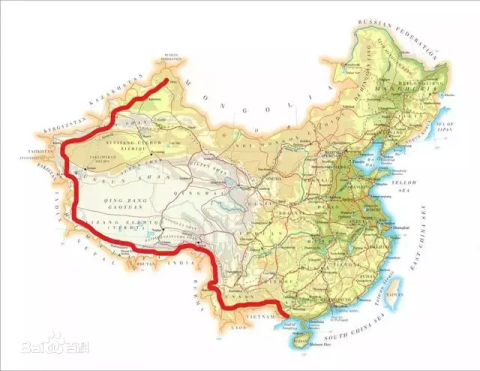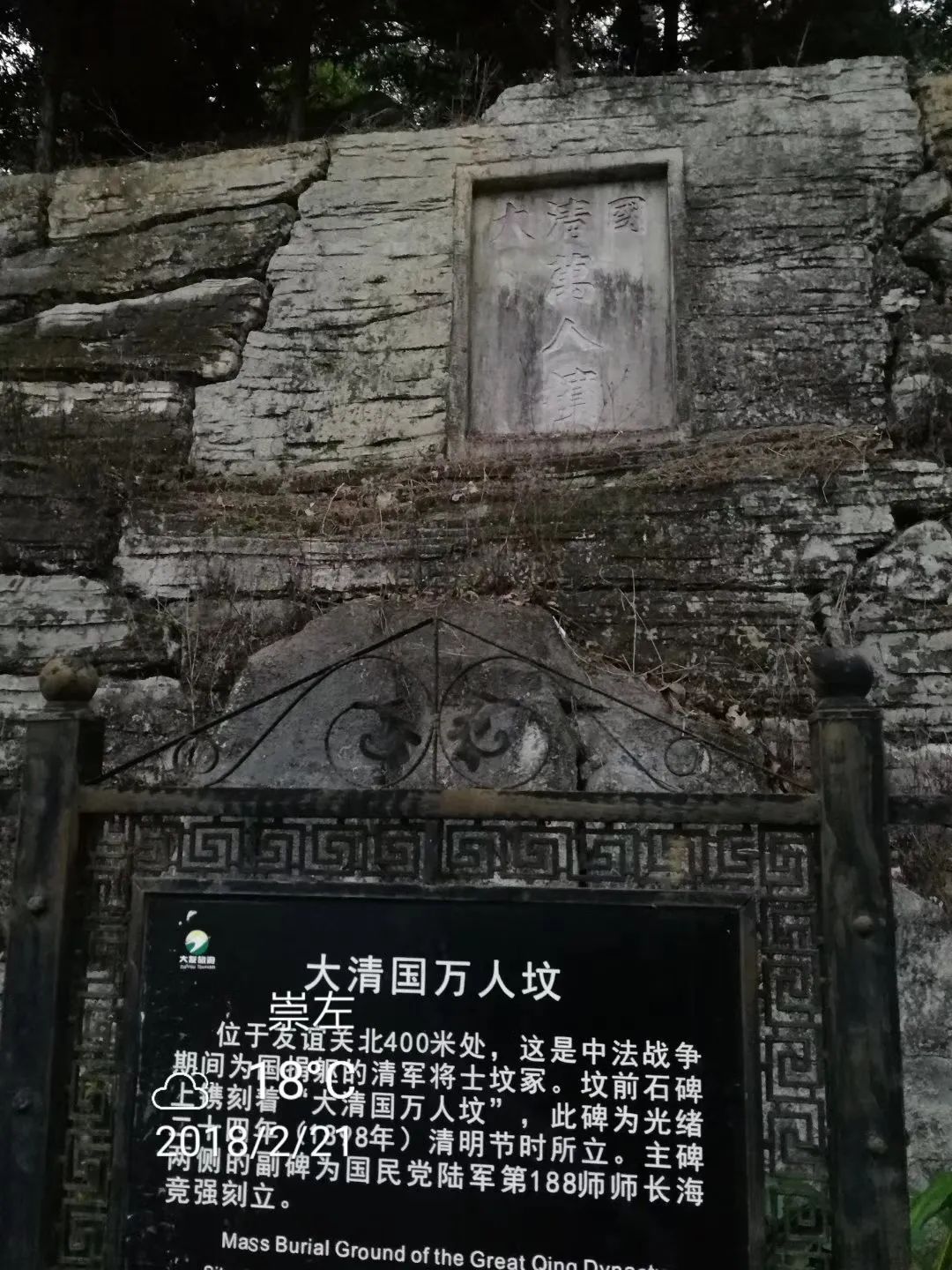
The word "old" is added in front of the Xinjiang-Tibet Highway National Highway 219 because in 2018, National Highway 219 was extended several times, from Yecheng in Kashgar, Xinjiang to Dongxing in Guangxi, and will be extended along the northwest , the southwest border roads are all connected, called New National Highway 219, with a length of more than 10,000 kilometers. I checked the map and found that of the more than 100,000 kilometers of New National Highway 219, only Milinmedog in Tibet and Bingchacha in Yunnan are the most difficult and dangerous. I have not yet set foot on a section of the road from Kashiye City in the interior to Dongxing in Guangxi Province on the coast. I have walked most of this road.

01
During the Spring Festival of 2018, in order to see the Yunnan Herringbone Bridge and Bise Village on the Sino-French Railway, I did not take the nearest passage from Guizhou to Yunnan, but chose to go south to Guilin, directly to Dongxing, a port city in Guangxi, and then to Yunnan via the border highway. The journey of New National Highway 219 starts from the mouth of Beilun River in Guangxi.
 Starting from the zero point of the new national highway 219, we will visit the China-Vietnam border, cross the Beilun River to Vietnam for a walk, and pick pear tips there at noon.
Starting from the zero point of the new national highway 219, we will visit the China-Vietnam border, cross the Beilun River to Vietnam for a walk, and pick pear tips there at noon.
 I took a look at the old town of Naliang on the way. Time has passed and the buildings are dilapidated. I can only rely on the descendants of the old overseas Chinese in the town to tell the story of the past. The existence of China in Southeast Asia is proved by the ability of the old overseas Chinese to do business.
I took a look at the old town of Naliang on the way. Time has passed and the buildings are dilapidated. I can only rely on the descendants of the old overseas Chinese in the town to tell the story of the past. The existence of China in Southeast Asia is proved by the ability of the old overseas Chinese to do business.
 I met the owner of a magnificent old building. He repeatedly emphasized that his grandfather earned his hard money in Nanyang and saved the money to return to his hometown to build this foreign-style building. He was definitely not an exploitative class. He also warmly invited us to come in and have tea.
I met the owner of a magnificent old building. He repeatedly emphasized that his grandfather earned his hard money in Nanyang and saved the money to return to his hometown to build this foreign-style building. He was definitely not an exploitative class. He also warmly invited us to come in and have tea.
02
 From the Daqing State Boundary Monument No. 1 to the Daqing State Boundary Monument No. 53, instead of taking the highway, I slowly traveled along the China-Vietnam border road for a few days. After China and Vietnam peacefully coexisted, the exchanges between border residents also increased.
From the Daqing State Boundary Monument No. 1 to the Daqing State Boundary Monument No. 53, instead of taking the highway, I slowly traveled along the China-Vietnam border road for a few days. After China and Vietnam peacefully coexisted, the exchanges between border residents also increased.
 The border road is connected to the mountains and waters of Vietnam. Vietnam is just a few meters away. The scenery is original. born The Chinese government has a friendly attitude towards the border residents of Vietnam. In many places, the border residents can travel freely. It turns a blind eye to the small smuggling in Vietnam and allows Chinese tourists to visit the border residents in Vietnam. mutual Perhaps the Chinese border residents have more ways to get rich, so they give the opportunity to do business with tourists to the Vietnamese side, and the Chinese border residents are not allowed to do business in the Vietnamese market.
The border road is connected to the mountains and waters of Vietnam. Vietnam is just a few meters away. The scenery is original. born The Chinese government has a friendly attitude towards the border residents of Vietnam. In many places, the border residents can travel freely. It turns a blind eye to the small smuggling in Vietnam and allows Chinese tourists to visit the border residents in Vietnam. mutual Perhaps the Chinese border residents have more ways to get rich, so they give the opportunity to do business with tourists to the Vietnamese side, and the Chinese border residents are not allowed to do business in the Vietnamese market.
03
 The Detian Falls, shared by China and Vietnam, does not have a big enough drop and looks unimpressive.
The Detian Falls, shared by China and Vietnam, does not have a big enough drop and looks unimpressive.
04
 Landscape painting under the muzzle, the German Krupp cannon that has gone through more than 100 years of wind and rain proves that cannons are the key to calibrating the country An important instrument for the home border.
Landscape painting under the muzzle, the German Krupp cannon that has gone through more than 100 years of wind and rain proves that cannons are the key to calibrating the country An important instrument for the home border.
 According to historical records, Sun Yat-sen launched the Zhennanguan Uprising here. The cannon turned its muzzle and aimed at the Qing army camp in the country. Dozens of Qing troops guarding the border were killed by the patriots who used the cannon to deter foreign enemies. Isn’t it considered a civil war tragedy? When Sun Yat-sen's guns were turned inward, he didn't know that the mass graves of the Qing Dynasty that he had paid homage to at Zhennanguan were all gone. The soldiers at the edge of the town were killed by his own people and his own cannons. Sun Yat-sen was not afraid of Vietnam's jokes.
According to historical records, Sun Yat-sen launched the Zhennanguan Uprising here. The cannon turned its muzzle and aimed at the Qing army camp in the country. Dozens of Qing troops guarding the border were killed by the patriots who used the cannon to deter foreign enemies. Isn’t it considered a civil war tragedy? When Sun Yat-sen's guns were turned inward, he didn't know that the mass graves of the Qing Dynasty that he had paid homage to at Zhennanguan were all gone. The soldiers at the edge of the town were killed by his own people and his own cannons. Sun Yat-sen was not afraid of Vietnam's jokes.
Baidu information: China News Network's news report on November 3, 2016 "Sun Yat-sen and Friendship Pass: Former Anti-Qing Uprising Site, Now an International Channel", "According to historical records, on December 4, 1907, Mr. Sun Yat-sen was at the Here, he personally launched an artillery attack on the Qing army, directly hitting the Qing army’s Fengwei Mountain base camp on the north side of Youyiguan, killing 62 Qing soldiers.”
After the socialist revolution, Zhennanguan was renamed Munanguan and Youyiguan. It lost its majestic air. The three forts in Zhenbei, Zhenzhong and Zhennan on Jinji Mountain, the mass graves of the Qing Dynasty and the modern radar station were all designed to suppress the In Vietnam, it is better to change it back to its original name Zhennanguan.

